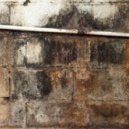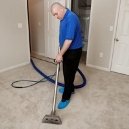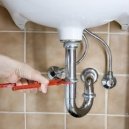Find a pre-screened local mold removal specialist Free Estimate
Find a Mold Specialist Now
Click or Call, Toll-Free 24/7
Removing Black Mold
Removing black mold from the home is necessary in order to prevent serious damage to your home as well as serious health problems, but black mold removal must be handled carefully in order to prevent spreading mold to other areas of the home or exposing yourself additional health risks.
Importance of Cleaning Black Mold
Mold literally eats away at the material of your home. Serious structural damage can occur if a black mold problem goes unchecked.
In addition, and perhaps of even greater concern, black mold is associated with numerous health problems, some of them quite severe. Health problems related to black mold exposure include trouble breathing, respiratory infections such as bronchitis and pneumonia, sore throats, headaches, coughing, sneezing, inflammation and pain in the joints, depression, and fatigue. While medical treatment may help, it will not be fully effective unless all mold is removed from the home. Continued exposure to black mold will likely make symptom worse, even with medical care.
Safe Black Mold Removal
While removing black mold is essential to safeguarding your health and the health of your loved ones, it can be a dangerous task. A spot of mold the size of postage stamp contains thousands of microscopic mold spores, and during the cleanup process, those spores become airborne and are easily inhaled. The very process of removing mold exposes you to the health risks described above.
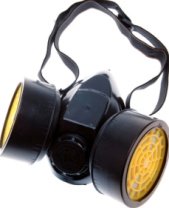
To safely remove black mold, you need to wear protective gear throughout the process, including an N-95 respirator mask (available at most home improvement and hardware stores), disposable gloves, disposable hair and shoe covers, and clothing (including pants and a long-sleeved shirt) that you will launder in hot water as soon as you’ve finished the job.
It’s impossible to remove mold completely from some materials, like carpet, insulation, and drywall. Instead, those materials must be removed and replaced. To avoid scattering mold spores throughout the house during the removal process, all moldy materials should be sealed in heavy plastic bags before you carry them out.
Use a vacuum with a HEPA (high-efficiency particulate air) filter to clean up dust and small debris created by the mold removal process. If you have to cut through drywall, floorboards, or other materials, have an assistant vacuum up dust and debris while you are cutting through the moldy materials to prevent mold spores from being scattered. Many experts also recommend setting up negative pressure in the work area to prevent mold spores from drifting to other areas of the home (to learn how to do that with a simple shop vac, check out the ebook A Homeowner’s Guide to Performing Mold Remediation by mold remediation expert Brian Turner).
Do not attempt to clean up black mold yourself if you have any type of respiratory disorder, immune system disorder, or mold allergy. Check with your doctor if you’re not sure if it’s safe for you to clean up a household mold problem yourself.
For Help Removing Black Mold
We recommend all homeowners with black mold in their homes schedule a free in-home consultation with a black mold removal professional. Even if you’re planning to do the work yourself, you will benefit from some free expert advice. A mold removal professional will visit your home, assess the problem, make sure you’ve located all areas of mold, advise you about the best way to remove it, and also tell you about the safety precautions you need to take. There’s no cost for the consultation, so you have nothing to lose. For a list of experienced mold removal professionals offering free in-home consultations in your area, just follow the link.
Free Home Inspection By A Mold Removal Specialist
Search This Website
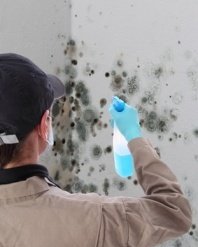
Recent Articles
-
See Our 5 Recommended Mold Removal Companies in Covington, KY
Apr 16, 25 12:59 PM
-
See Our 5 Recommended Mold Removal Companies in Wheaton, IL
Jun 20, 24 10:33 AM
-
See Our 5 Recommended Mold Removal Companies in Aberdeen, SD
Oct 08, 21 04:05 PM

